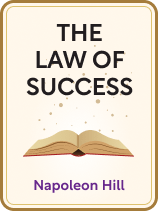

This article is an excerpt from the Shortform book guide to "The Law of Success" by Napoleon Hill. Shortform has the world's best summaries and analyses of books you should be reading.
Like this article? Sign up for a free trial here.
Do affirmations and visualizations actually work? How does practicing affirmations and visualizations help you get closer to your goals?
Affirmations and visualizations are powerful tools for achieving your goals. When you recite affirmations or visualize having achieved your goal, you create a powerful impression on your subconscious mind, which helps you act in a more goal-oriented way.
Here’s how to create affirmations and visualizations to support your goals.
Create Affirmations and Visualizations
Once you’ve defined a specific goal, create affirmations and visualizations that encourage you to achieve it. Hill explains that continually affirming or visualizing yourself successfully achieving your goal leaves a positive impression on your subconscious mind. The more weight you add to this impression, the quicker you’ll convince your subconscious mind you’re capable of achieving success.
Hill recommends a three-step process for creating affirmations and visualizations to support your goal:
1) Write a short statement describing what you intend to achieve and read it multiple times a day. For example, “I intend to make 50 sales a day.”
(Shortform note: Research suggests that setting and reviewing intentions helps you make choices that initiate successful outcomes. This is because intentions force you to focus on who you want to be, and they increase your self-discipline when you’re faced with conflicting choices. For example, setting an intention every evening to improve your sales pitch the next day focuses your mind on being a successful salesperson. As a result, you know the right way to act when faced with a decision between working constructively and wasting your time on distractions.)
2) Each time you read your statement, imagine what new skills or qualities you would possess and how your life would change once you’ve achieved your goal. For example, you might imagine yourself as more relaxed and confident or in charge of a large sales team.
(Shortform note: In addition to imagining your success, feel grateful for it. According to Wallace D. Wattles (The Science of Getting Rich), imagining your desired end result and practicing gratitude before achieving it provide two benefits. First, they send a clear message to the universe (higher consciousness). Second, they keep you from becoming dissatisfied with your current life experiences. This is because when you imagine feeling grateful for something you don’t yet have, you feel positive regardless of what’s actually happening. The more positive you feel, the more likely you are to adopt the behaviors and lifestyle you imagine yourself having. )
3) Create visualizations and affirmations to support each new skill or quality you imagine yourself possessing. For example, visualize yourself interacting with your employees, and affirm, “I feel relaxed and confident about my ability to make sales.”
(Shortform note: Studies reveal that visualizations and affirmations can help you feel more positive about achieving your goal. Imagining a positive event impacts your brain in the same way that experiencing a positive event does—it creates pleasurable feelings that enhance your mood. Likewise, affirmations stimulate reward circuits in your brain that help you maintain a positive state of mind.)

———End of Preview———
Like what you just read? Read the rest of the world's best book summary and analysis of Napoleon Hill's "The Law of Success" at Shortform.
Here's what you'll find in our full The Law of Success summary:
- How your subconscious mind creates your life experiences
- Why the only way to achieve success is to realign your habitual thoughts
- Actionable advice on how to retrain your subconsciousmind for success






